I am about to publish in a plastic surgery journal the results of quilting in 76 patients compared to 26 who did not have quilting. The seroma in tummies with quilting was 2.2% whereas those without quilting was 7.4%. The contour is much more pleasing, as the tension across the tummy skin is more evenly distributed. The only downside is that in some slimmer patients, the quilting can show up as puckering or dimples in the skin; however, these disappear by 10 weeks when the suture is absorbed by the body. Needless to say, I have also been using quilting in my cosmetic tummy-tuck patients too.
Quilting reduces fluid formation in tummy-tuck (graphic surgery video - viewer discretion advised)22/11/2015 Abdominoplasty or tummy-tuck is one of the most frequently performed cosmetic operations. And seroma or fluid collection, when you return to the clinic with a feeling of 'water-bed' under the skin layer, is one of its commonest complications. In my blog in 2013, I wrote about quilting the tummy skin down onto the rectus sheath to obliterate the space with a Quill / Stratafix knotless barbed dissolving suture in my DIEP breast reconstruction patients, wherein tummy tissue is used to reconstruct a breast. The closure of the tummy is very similar to that of a cosmetic tummy tuck.
I am about to publish in a plastic surgery journal the results of quilting in 76 patients compared to 26 who did not have quilting. The seroma in tummies with quilting was 2.2% whereas those without quilting was 7.4%. The contour is much more pleasing, as the tension across the tummy skin is more evenly distributed. The only downside is that in some slimmer patients, the quilting can show up as puckering or dimples in the skin; however, these disappear by 10 weeks when the suture is absorbed by the body. Needless to say, I have also been using quilting in my cosmetic tummy-tuck patients too.
0 Comments
As a side effect of my testicular cancer in my thirties, I developed male breasts (gynaecomastia). The right breast was larger and more solid.
Wearing tighter fitting shirts was uncomfortable, and shirts started to gap at the buttons. I come from the southern hemisphere and stripping off around the pool became embarrassing, something I used to take for granted. Most people naturally think that you have man-boobs due to excessive weight, though I am of fairly slim build. However hard ones tries, you cannot shift the fat from the breasts. At the time of my testicular cancer treatment, the surgeon said if I ever wanted to reduce the man-boobs, something could be done. To be honest, I was just glad to be in remission and said ‘maybe later’. When I decided to sort it out, I consulted with several surgeons, as I wanted to understand how the procedure would be done. Miss Hazari was very well-informed. She covered all the basics before surgery to ensure the risks were managed, and explained the options as well as which procedure would give the best outcome. The surgery was different on both sides due to the mass on the right. So liposuction alone was required to the left (as I did not have a fibrous disc behind the nipple). The right breast required skin reduction in addition to liposuction. The right side therefore had an incision around the nipple as well as short horizontal incisions away from the nipple to reduce the excessive skin. Immediately after surgery the results were already apparent. The left breast was greatly reduced and looked completely natural with the exception of the liposuction entry points. These have faded and the tissue behind evened out, so now the scars look like small moles, which blend in amazingly. The right side is more symmetrical to the left with the nipple reduced in size to match. I apply Bio-oil and the scaring is fading nicely. Looking back at how I used to be concerned about my chest appearance and would walk to and from the pool on holiday with a T-shirt or a towel over my right shoulder, I wish I had the procedure many years earlier. The appearance is already so normal, and things can only get better over the next year as the scaring continues to fade. A great result all round! The GMC have launched a consultation on new draft guidance which sets out the standards for doctors offering cosmetic interventions. One of the key points is "making sure patients are given enough time and information before they decide whether to have an intervention". This will differ for surgical and non-surgical procedures, of course, and in case of surgery, will also depend on the complexity of the operation. The GMC have not specified a particular time period.
The majority of plastic surgeons have been using a '2 weeks cooling-off ' period for some years. I believe that the following should be made mandatory for all cosmetic surgery:
The GMC public consultation runs until 1 September. To participate and submit your views, visit http://www.gmc-uk.org/guidance/news_consultation/27171.asp. Listen to my interview on the BBC Radio 4 Today, 0715hrs on 8 June 2015 with Justin Webb and James Naughtie: Enlarged male breasts, Gynaecomastia is a common condition causing significant embarrassment. Although it can be associated with hormonal imbalances and testicular tumours (age group 25-45 years), the majority arise in adolescent and middle-aged males in the absence of underlying pathology. Most teenage boys will experience some degree of transient gynaecomastia, which usually subsides in less than two years.
Surgical options very much depend on the degree of excess breast tissue and whether there is excess skin associated with it. It has been graded by Simon as: Grade 1 small, but visible breast tissue with no redundant skin Grade 2a moderate breast development with no skin redundancy Grade 2b moderate breast development with redundant skin Grade 3 marked breast tissue with significant excess skin Treatment: Lower-grade gynaecomastia can be managed with simple excision and/or liposuction of the abnormal tissue (Grade 1–2a). Often, a fibrous disc is present beneath the nipple and this cannot be removed by liposuction alone and will require excision. Higher-grade gynaecomastia, especially that which appears as a female breast will usually require skin excision and, consequently, involves more extensive scarring,making a good aesthetic outcome difficult. The attached photos are before and after combination of liposuction and open excision with a visible scar around the lower nipple, and additional scarring to remove excess skin on the right. 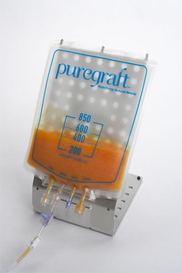 Continuing in the series of everyday surgical heroes,that make procedures easier and safer for my patients, is the Puregraft® fat transfer bag. I have been performing lipofilling/ fat transfer for 20 years, initially as a trainee and for the last 9 years as a Consultant. Fat transfer is an important adjunctive procedure in breast reconstruction and aesthetic surgery. I have used the Coleman centrifuge to concentrate fat, then gave up using centrifugation, and continued with just washing the fat and letting it stand to separate. I started using the Puregraft® bag about 2 years ago and it has finally been approved for use in my local NHS hospital. And what a difference it makes. It is a closed system, so processing the fat is sterile, less messy and quicker. Due to its filter, the fat appears to be cleaner with less blood. And anecdotally, my observation has been that survival rates of harvested fat with Puregraft® are higher. A recent study, now confirms this: Long-term volumetric retention of autologous fat grafting processed with closed membrane filtration. Gerth DJ, et al. Aesthet Surg J. 2014 Sep;34(7):985-94. Another useful tool to improve outcomes for patients! Every year thousands of people in the UK put themselves at serious risk by undergoing bad or inappropriate surgery that could be easily avoided by asking some simple questions about their treatment. Poor surgery can have both physical and psychological consequences, so it is vital to make an informed choice and choose the right surgeon for the job.
Following 5 Cs for cosmetic surgery will help you decide if cosmetic surgery is the right choice for you. THINK OVER BEFORE YOU MAKE OVER 1 Think about the CHANGE you want to see Do your research. Find out all you can about the treatment/s you want. Be precise as to the change you hope to see and the reasons why. 2 CHECK OUT potential surgeons If you are thinking about cosmetic surgery, speak to your GP. Find a surgeon who has the right credentials and is on the appropriate specialist register with the GMC. Fully qualified Plastic Surgeons will be on the GMC Specialist Register for Plastic Surgery. Find out about their experience of the procedure you are considering and make sure you meet them and discuss the outcome you can expect before you commit to having something done. 3 Have a thorough CONSULTATION & ask the right questions Your Plastic Surgeon will discuss and clarify the treatment options with you and then plan your treatment. Find out as much as possible by bringing along questions so you know the risks involved and feel comfortable with the surgeon who will be carrying out your surgery. 4 COOL OFF before you commit Give yourself some time to ensure that you want the surgery and to make sure you feel at ease with the surgeon who will be treating you. 5 CARE about your aftercare Aftercare can be just as important as the surgery itself, so make sure you know who to contact and how you will be looked after, especially if there are any complications or problems following your surgery or treatment. Key questions to ask your surgeon before choosing cosmetic surgery
THINK OVER BEFORE YOU MAKE OVER One of the two reasons why breast implants need replacing is capsular contracture, the other is rupture or leaks. The implants that I currently use are high cohesive gel by Allergan and Mentor, both are FDA approved. Rupture rates in these implants are low, infact both manufacturers provide a life-time warranty for rupture. Capsular contracture, though, continues to be a problem.
Polyurethane coated implants, supplied by Polytech in the UK may be a solution. These implants have been used in South America for the last 35 years, and were used for a short period of time in the US, but were withdrawn from USA, alongwith all silicone implants in the 1990s during the years of ‘silicone controversy’. The other finding has been the presence of 2,4TDA (toluenediamine) in the urine of women with these implants. But this has finally been resolved too, as TDA has been found in urine of women with no breast implants. Polyurethane is also used in other prosthetics such as heart valves and pacemakers, so safety is no longer an issue. The polyurethane coating does two things:
Some of the most frustrating moments I have faced in my NHS practice have been the total loss of input I have in the way patients are scheduled for my operating lists. My last act in the process is filling out the waiting list form- the form then disappears into the abyss of middle management in the NHS. I have often despaired, then in late December, I heard the magic words 'live scheduling'.... it has restored my faith in my ability to deliver appropriate and timely care to my patients. And I started using it straightaway!
Now when I am in my NHS clinic, at base in QVH or a peripheral clinic such as Canterbury, via secure remote access to the server in East Grinstead, I can see my operating lists over several months (with my holidays, including study and professional days keyed in). I can offer the patient sitting in front of me, an elective surgery operating slot that is mutually acceptable. I give them a date for their surgery! Easy Happiness all round. The Winter BAPRAS Scientific meeting in November 2014 was an exciting one. It saw an update on the build of the UK National Flap Registry, the launch is scheduled for January 2015.
Why should we measure outcomes? Because as Sir Bruce Keogh has said: "If you do not know what you are doing and how well you are doing it, you have no right to be doing it at all." The audit will be for all pedicled and free flaps (skin and tissue is moved from one part of the body to another, for reconstruction after cancer treatment / trauma / infection, etc). It will be cross-speciality, including all surgeons in the UK who perform reconstructions. It will measure key performance indicators such as mortality, unplanned red-admission or return to theatre episodes, in addition to flap failure. Patients will also be asked to give their feedback through Patient reported outcome measures (PROMs) for breast reconstruction and lower limb reconstruction. The aims are, once data has been collated over 2-3 years, to identify trends in treatment, improve standards and ultimately outcomes for patients. When a patient has a flap (tissue moved from one part of body to another), such as when I make a breast from the abdomen or inner thigh, the blood flow within it is monitored with the use of a doppler device. The Doppler proble is applied to the skin overlying the blood vessel and the signal is determined by a sound.
The work of one man has resulted in the Doppler effect being used in many everyday things we take for granted- sirens, satellite communication, fetal heart monitoring, police radars and monitoring blood flow in medicine. The Doppler signal is the change in frequency of a sound wave for an observer, moving relative to its source, named after an Austrian physicist Christian Doppler, in 1842. It is commonly heard when a vehicle with a siren approaches, passes and recedes. He described the effect at the age of 38 , published many articles as a Professor and then died pre-maturely at the age of 49 from lung disease. |
Archives
February 2020
Categories
All
|

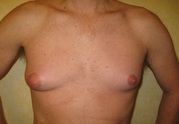
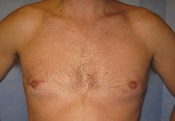

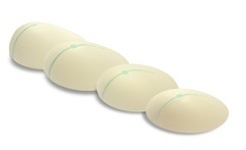

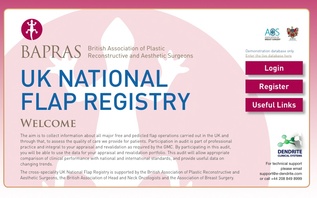
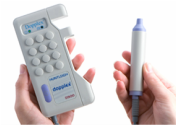
 RSS Feed
RSS Feed





